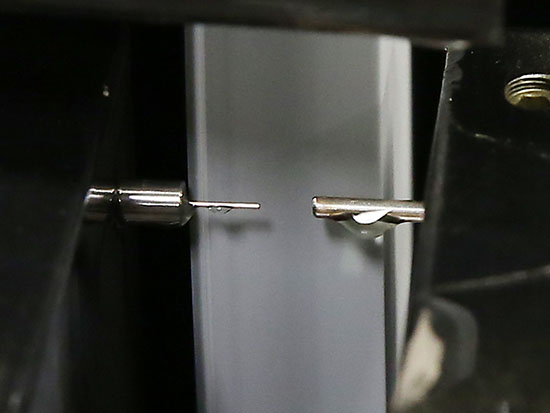 Guidewires are an essential medical tool commonly used in minimally invasive interventional procedures. Long and thin guidewires help central venous catheters to navigate through the intricate pathways of the body, enabling the larger device to reach a targeted site of the coronary system where medication or a further medical device can then be delivered.
Guidewires are an essential medical tool commonly used in minimally invasive interventional procedures. Long and thin guidewires help central venous catheters to navigate through the intricate pathways of the body, enabling the larger device to reach a targeted site of the coronary system where medication or a further medical device can then be delivered.
While there are many different guidewire designs on the market, each product is comprised of four key features: core wire, tip, body, and coating. As the name suggests, the core wire is the innermost part of the wire. By providing stability and steerability to the end-device, its design is at the true center of the guidewire’s performance.
Core Wire Grinding Techniques
Grinding is an engineering operation that deploys a powered abrasive wheel to remove material, reducing the size of the metal and creating an array of shapes and tapers. The technique is commonly seen as the best method of delivering small-diameter components like core wires.
“Grinding can achieve finishes, diameters, and tolerances that other methods, like milling and turning, are not able to achieve,” says Jim Boldig, director of engineering at Custom Wire Technologies. “Core wires for guidewire applications usually have a grind profile to meet anatomically correct positions. This allows the end user to manipulate the end wire with precise movements.”
When grinding core wires, centerless grinding is the leading technique. This method enables optimal levels of stiffness and flexibility throughout the length of the core wire.
“Centerless is often used for long tapers for core wires where a diameter tolerance is critical,” says Boldig. “Centerless grinding is used for specific applications when the wire diameter is smaller than 1mm (0.039in). This method is also suited for long production runs where throughput is essential.”
To create the desired grind profile within extremely tight tolerances, many original equipment manufacturers and university researchers outsource their core wire grinding operations to a trusted specialist. Custom Wire Technologies has been serving the medical device industry with high-quality wire components and assemblies for more than 20 years.
Materials and Design Capabilities
When designing a core wire, the choice between two dominating materials – stainless steel or nitinol – will have critical effects on the final product. After many years of extensive use in core wires, stainless steel is known for excellent torque, push, and support. Alternatively, nitinol, an alloy of nickel and titanium, can offer superior flexibility, kink resistance and shape-setting memory capabilities.
The diameter and length of the core wire will also impact its flexibility. A larger diameter results in more support, while a thinner core wire means more agility. When it comes to length, more flex can be achieved through longer designs, while shorter lengths will result in greater stiffness.
The core wire ends with a taper, which usually stops short of the distal tip. Various taper lengths will affect the torque transmission and steerability of the wire. However, whatever end-properties are desired, it is likely that precision grinding will be utilized in the manufacturing process.
CWT can grind stainless steel and nitinol core wires in lengths longer than 10 feet, with diameters ranging between 0.006in and 0.35in. Highly precise, automated equipment is specialized to do both large and small manufacturing runs.
Whether you need help turning a new idea into reality or require a dependable partner for high-volume manufacturing of a licensed device, CWT’s precision grinding division can cover your needs.
LET’S CONNECT!
To learn more about how Custom Wire technologies can serve you and your business, be sure to reach out! We look forward to hearing from you and learning how we can be of service.



